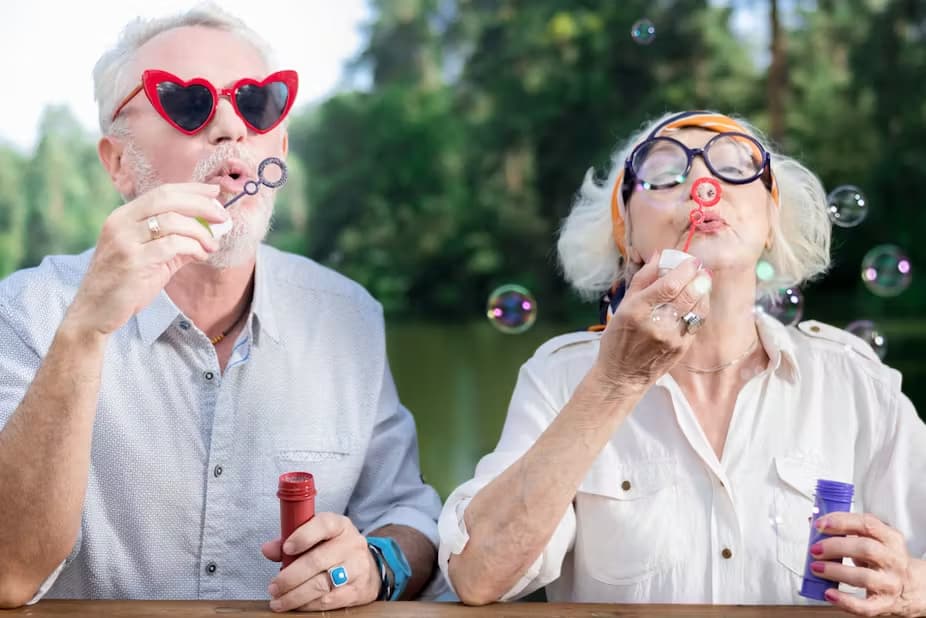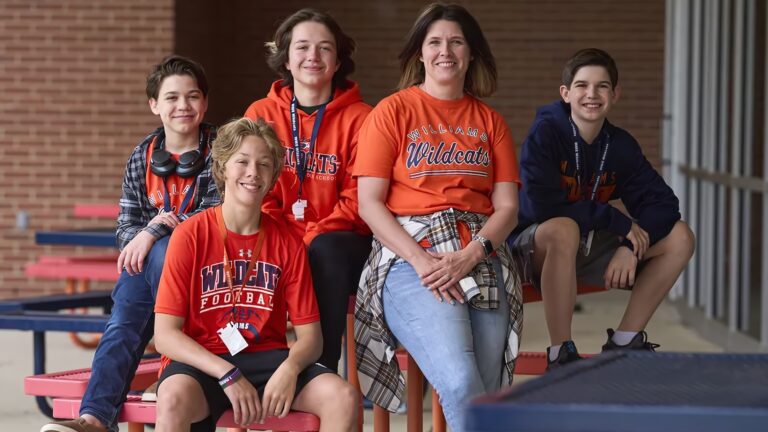August 25, 2023 Healty Aging
Class Slides
Objective: By the end of the lesson, students will be able to analyze and discuss common misconceptions and unhelpful practices related to healthy aging. They will apply the concept of cognitive dissonance to recognize conflicting beliefs, values, or behaviors and propose strategies to align actions with healthy aging principles.
1. Warm-Up (10-15 minutes): Discussion Starter on Quotes about Aging (10:00-10:15)
Context:
Before presenting the quotes, offer brief context on the individuals quoted to help students connect with the content:
- H.L. Mencken: An American journalist and critic known for his wit and skepticism.
- Stanislaw Jerzy Lec: A Polish poet and aphorist, famous for his thought-provoking sayings.
- Frank Lloyd Wright: A renowned American architect, known for his innovative designs.
- Golda Meir: Israel’s fourth Prime Minister, known for her strong leadership.
- George Bernard Shaw: An Irish playwright and critic, famous for his wit and social commentary.
Activity:
- Individual Reflection (2-3 minutes):
- Present the following quotes to the students.
- Ask them to reflect individually on the quotes, noting their initial reactions.
- Pair/Group Discussion (5-7 minutes):
- Have students explain to their partner(s) why they agree or disagree with each quote.
- Provide the following guiding questions:
- What does the quote mean to you?
- How does it relate to the concept of aging?
- Can you think of any real-life examples that support or contradict the quote?
- How does the quote align with your own beliefs or cultural values?
Quotes:
- “The older I grow, the more I distrust the familiar doctrine that age brings wisdom.” – H.L. Mencken (わたしは歳をとるにつれて、年齢を重ねると知恵が付くというおなじみの教えを信じられなくなってきている。)
- “Youth is the gift of nature, but age is a work of art.” – Stanislaw Jerzy Lec (若さとは自然からの贈り物である。年齢は鍛錬による芸術である。)
- “The longer I live, the more beautiful life becomes.” – Frank Lloyd Wright (長く生きれば生きるほど、人生は更に美しくなる。)
- “Old age is like a plane flying through a storm. Once you’re aboard, there’s nothing you can do.” – Golda Meir 老年とは、嵐の中を飛んでいる飛行機のようなもの。ひとたび搭乗すれば、できることなんて何もない。)
- “We don’t stop playing because we grow old; we grow old because we stop playing.” – George Bernard Shaw (年をとったから遊ばなくなるのではない。遊ばなくなるから年をとるのだ。)
Debrief (2-3 minutes):
- Facilitate a class discussion, inviting students to share their insights and reflections.
This activity engages students in critical thinking and personal reflection, allowing them to connect with the topic of healthy aging and explore different perspectives on age and wisdom.
2. Presentation (15 minutes): New words & Relay (10:15-10:30)
- Purpose:
- Introduce the theme of healthy aging.
- Present new vocabulary and concepts.
- Activities:
- Teacher-Led Presentation: Use slides to introduce 10 words with definitions, examples, and context.
- Word-Definition Relay: Place words and definitions on opposite sides of the room. Students race to match them, running back and forth.
| Vocabulary Word | Definition |
|---|---|
| Cognitive Dissonance | The mental discomfort experienced when holding conflicting beliefs, values, or attitudes. |
| Conflict | A serious disagreement or argument; inconsistency. |
| Chronic | Lasting for a long time or constantly recurring. |
| Misconception | A view or opinion that is incorrect because it is based on faulty thinking or understanding. |
| Ignore | To deliberately pay no attention to; disregard. |
| Avoid | To keep away from or stop oneself from doing something. |
| Isolate | To set apart or cut off from others; to remain alone or separated. |
| Refuse | To indicate or show that one is not willing to do something. |
| Excessive | More than is necessary, normal, or desirable; immoderate. |
| Behavior | The way a person acts or conducts oneself. |
Fun Activity: Word-Definition Relay
Setup:
- Divide the Class: Divide the students into two teams. One team will have two members, and the other will have three.
- Prepare Cards: Create cards with the 10 vocabulary words and corresponding definitions. You’ll have 20 cards in total.
- Arrange Cards: Place vocabulary words on one side of the room and definitions on the opposite side.
- Starting Line: Have teams line up on one side of the room (next to the vocabulary words).
Activity:
- Explain Rules: Explain that students must match the vocabulary words with the correct definitions by running back and forth. One student from each team will run at a time.
- Start Relay: On your signal, the first student from each team picks up a vocabulary word card, runs to the other side of the room to find the matching definition, and then runs back to tag the next team member.
- Continue Relay: The next student in line repeats the process, matching another word with its definition.
- Adapt for Unequal Teams: For the team with three members, one student will have an extra turn.
- Check Matches: After all words are matched with definitions, quickly check the matches as a class, discussing any errors or questions.
- Declare Winner: The team that finishes first and has all correct matches wins.
Considerations:
- Encourage Collaboration: Allow team members to discuss and collaborate as they make matches. This can add a strategic element to the game.
- Time Limit: To add excitement, you can set a time limit for each turn, challenging students to make quick decisions.
- Use Visual Aids: If possible, use visual aids (such as colored cards) to help students quickly identify matches.
- Repeat for Practice: Consider running the relay multiple times, mixing up teams, and reshuffling words and definitions for additional practice.
The Word-Definition Relay offers a kinesthetic learning experience that encourages collaboration, quick thinking, and active engagement with vocabulary. It can be an enjoyable way to reinforce vocabulary understanding in a small class.
3. Practice (30 minutes): Bad Advice & Cognitive Dissonance (10:30-11:00)
- Purpose:
- Let students use the new language or concept related to healthy aging.
- Activities:
- Pair Work (15 mins): Hand out “The Worst Advice for Healthy Aging”. In groups of two or three, examine the unhelpful tips for healthy aging. Students choose fivetips from the list that resonate with them or that they have observed in others. Discuss how these behaviors might create cognitive dissonance—conflicting beliefs, values, or behaviors. Then, complete the table for each chosen tip.
- Group Work (15 mins): As one group of five, students compare their guides and discuss similarities and differences.
4. Production (20 minutes): Role-play (11:00-11:20)
- Scenario: Students take on roles related to healthy aging, such as a fitness instructor, nutritionist, family member, doctor, or someone following unhealthy practices.
- Task: Students work in pairs or small groups to create and act out a brief scene demonstrating healthy or unhealthy aging practices.
- Guidelines: Provide prompts or scenarios to guide the role-play, such as a doctor’s appointment discussing healthy habits, a family conversation about lifestyle changes, or a TV show segment on healthy aging.
- Reflection: After each role-play, facilitate a brief discussion on what was demonstrated and the vocabulary used.
5. Cool Down/Reflection (10 minutes): (11:20-11:30)
- Purpose:
- Reflection on the lesson and consolidation of learning.
- Activities:
- Feedback Session: Facilitate a group discussion on what they learned, what surprised them, and how they can apply these insights to their lives.
- Journal Writing (Optional Homework): Assign students to write a reflective journal entry on their thoughts about healthy aging and how they plan to apply the concepts in their lives.
This lesson plan encourages active engagement, critical thinking, creativity, and personal reflection, aligning with various levels of Bloom’s Taxonomy.







